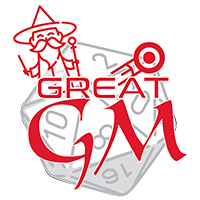Damaging & Repairing Equipment
Often during a game the players equipment (such as weapons or vehicles) will malfunction or become damaged. In order to use the repair skill, the Player or Game Master must understand the game mechanics that handle how objects can be damaged and in turn repaired. Equipment can be disabled in such a way as to cause the device to malfunction without any real physical damage to the object - while physical damage to the object deals hit points of damage.
- Defensive Bonus: Objects are easier to hit than characters because they do not move about to dodge the attack. The defensive bonus of the object is equal to 10 + its size modifier + its Dexterity modifier. An inanimate object has not only a Dexterity of 0 (-5 penalty to Defense), but also an additional -2 penalty to its Defense. Furthermore, if you take a full-round action to line up a shot, you get an automatic hit with a melee weapon and a +5 bonus on attack rolls with a ranged weapon.
- Hardness: Each object has a hardness - a number that represents how well it resists damage. Whenever an object takes damage, subtract its hardness from the damage. Only damage in excess of its hardness is deducted from the object’s hit points.
- Hit Points: An object’s hit point total depends on what it is made of and how big it is. When an object’s hit points reach 0, it’s ruined. Very large objects have separate hit point totals for different sections. For example, you can attack and ruin a wagon wheel without destroying the whole wagon.
- Energy Attacks - Acid and sonic attacks deal damage to most objects just as they do to creatures; roll damage and apply it normally after a successful hit. Electricity and fire attacks deal half damage to most objects; divide the damage dealt by 2 before applying hardness. Cold attacks deal one-quarter damage to most objects; divide the damage dealt by 4 before applying the hardness.
- Ranged Weapon Damage - Objects take half damage from ranged weapons (unless the weapon is a siege engine or something similar). Divide the damage dealt by 2 before applying the hardness.
- Ineffective Weapons - The Game Master may determine that certain weapons just can’t effectively deal damage to certain objects. For example, you may have a hard time chopping down a door by shooting arrows at it or cutting a rope with a club.
- Immunities - Objects are immune to non-lethal damage and to critical hits.
- Vulnerability to Certain Attacks - The Game Master may rule that certain attacks are especially successful against some objects. For example it’s easy to light a curtain on fire, chop down a tree with an ace, or rip up a scroll. In such cases, attacks deal double their normal damage and may (at Game Masters discretion) ignore the object’s hardness.
- Damaged Objects - A damaged object remains fully functional until the item’s hit points are reduced to 0, at which point it is destroyed. For instance, the wielder of a damaged weapon takes no penalty due to the weapon’s damage. Damaged (but not destroyed) objects can be repaired with the Repair skill.
- Saving Throws: Non-magical, unattended items never made saving throws. They are considered to have failed their saving throws, so they always are affected by (for instance) a disintegrate spell. An item attended by a character (being grasped, touched, or worn) makes saving throws as the character (that is, using the character’s saving throw bonus).
Breaking Equipment
A character has two options when attempting to break an object, smashing the item with a weapon, or breaking the item with sheer strength.
- Smashing an Object: A character may attempt to smash an object by using the Sunder special attack in combination with a slashing or bludgeoning weapon. The attack roll is made against the objects Defensive bonus.
- Sheer Strength: The character performs a Strength check with a DC equal to the Break or Burst DC of the object.
Table: Size and Defense Modifier of Objects
| Size (Example) | Defense Modifier |
|---|---|
| Colossal (broad side of a barn) | -8 |
| Gargantuan (narrow side of a barn) | -4 |
| Huge (wagon) | -2 |
| Large (big door) | -1 |
| Medium (barrel) | +0 |
| Small (chair) | +1 |
| Tiny (book) | +2 |
| Diminutive (scroll) | +4 |
| Fine (potion) | +8 |
Table: DCs to Break or Burst Items
| Strength Check to: | DC |
|---|---|
| Break down simple door | 13 |
| Break down good door | 18 |
| Break down strong door | 23 |
| Burst rope bonds | 23 |
| Bend iron bars | 24 |
| Break down barred door | 25 |
| Burst chain bonds | 25 |
| Break down iron door | 28 |
Table: Common Armor, Weapon, and Shield Hardness and Hit Points
| Weapon or Shield | Example | Hardness | HP1 |
|---|---|---|---|
| Light Blade | Short Sword | 10 | 2 |
| One-handed Blade | Longsword | 10 | 5 |
| Two-handed Blade | Greatsword | 10 | 10 |
| Light Metal-hafted Weapon | Light Mace | 10 | 10 |
| One-handed Metal-hafted Weapon | Heavy Mace | 10 | 20 |
| Light Hafted Weapon | Handaxe | 5 | 2 |
| One-handed Hafted Weapon | Battleaxe | 5 | 5 |
| Two-handed Hafted Weapon | Greataxe | 5 | 10 |
| Projectile Weapon | Crossbow | 5 | 5 |
| Armor | - | Special2 | Armor bonus x5 |
| Buckler | - | 10 | 5 |
| Light Wooden Shield | - | 5 | 7 |
| Heavy Wooden Shield | - | 5 | 15 |
| Light Steel Shield | - | 10 | 10 |
| Heavy Steel Shield | - | 10 | 20 |
| Tower Shield | - | 5 | 20 |
Table: Object Hardness and Hit Points
| Object | Hardness | Hit Points | Break DC |
|---|---|---|---|
| Rope (1 inch diam.) | 0 | 2 | 23 |
| Simple Wooden Door | 5 | 10 | 13 |
| Small Chest | 5 | 1 | 17 |
| Good Wooden Door | 5 | 15 | 18 |
| Lock Box or Chest | 5 | 15 | 23 |
| Strong Wooden Door | 5 | 20 | 23 |
| Masonry Wall (1 ft. thick) | 8 | 90 | 35 |
| Hewn Stone (3 ft. thick) | 8 | 540 | 50 |
| Chain | 10 | 5 | 26 |
| Manacles | 10 | 10 | 26 |
| Iron Door (2 in. thick) | 10 | 60 | 28 |
Table: Substance Hardness and Hit Points
| Substance | Hardness | Hit Points |
|---|---|---|
| Paper or Cloth | 0 | 2/inch of thickness |
| Rope | 0 | 2/inch of thickness |
| Glass | 1 | 1/inch of thickness |
| Ice | 0 | 3/inch of thickness |
| Leather or Hide | 2 | 5/inch of thickness |
| Wood | 5 | 10/inch of thickness |
| Stone | 8 | 15/inch of thickness |
| Iron or Steel | 10 | 30/inch of thickness |
| Mithral | 15 | 30/inch of thickness |
| Adamantine | 20 | 40/inch of thickness |
Repairing Equipment
Once equipment has been damaged an assessment of the damage will determine how the object is to be repaired.
- Malfunctioning or Disabled Equipment: Through the use of the disable device skill or other in game circumstances, a device may become inoperable, ether the device will fail to function or a negative will be applied to the use of the device until it is repaired. This state of affairs can be remedied by the use of the Repair skill alone, the character simply spends the allotted time required to effect repairs after which the player rolls a skill check to see if the repairs have cured the problem. A successful skill check returns the functionality of device to its original condition, but not hit points of damage are removed from the device.
- Physical Equipment Damage: Hit points of damage represent physical damage sustained by the object, this damage can be repaired through removing damaged components and replacing them with new undamaged components. To do so required the acquisition of spare parts, combined with a character spending an allotted amount of time effecting the repairs. After each allotted time period the player performs a Repair skill check, the higher the score the greater the number of hit points that have been repaired. This process can be repeated until all hit points have been repaired.
1 The hp value given is for medium armor, weapons, and shields. Divide by 2 for each size category of the item smaller than medium, or multiply it by 2 for each size category larger than medium.
2 Varies by material.
Remove these ads. Join the Worldbuilders Guild










Comments